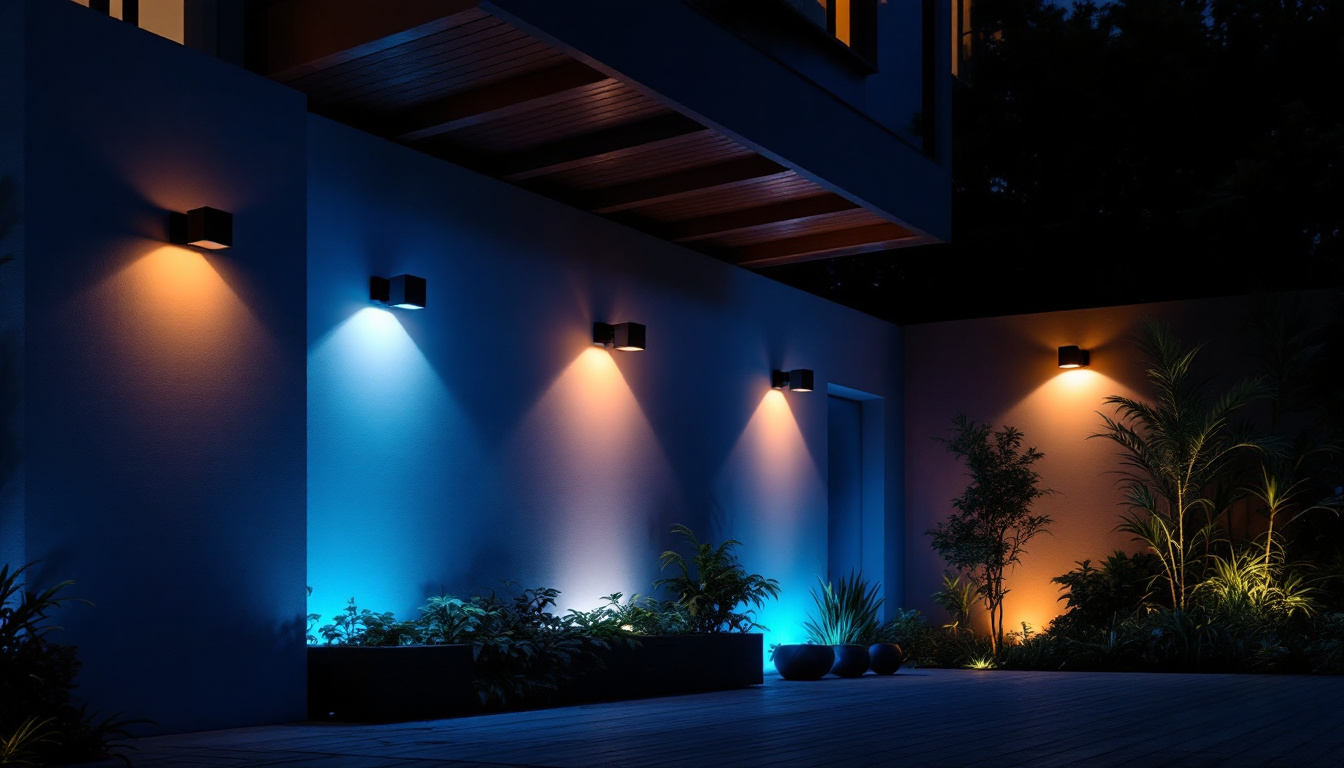
The transition from fluorescent to LED lighting has gained significant traction in recent years, offering numerous benefits such as energy efficiency, longevity, and lower maintenance costs. However, lighting contractors often encounter challenges during this conversion process. Understanding common pitfalls can help avoid costly mistakes and ensure a smooth transition for clients. This article explores the frequent errors made by lighting contractors when replacing fluorescent bulbs with LED alternatives.
One of the primary advantages of LED lighting is its energy efficiency. LEDs consume significantly less power compared to fluorescent bulbs, translating to lower energy bills for clients. However, some contractors fail to adequately communicate these benefits to their customers. It’s essential to provide clear comparisons of energy consumption to help clients understand the long-term savings potential.
Moreover, not all LED products are created equal. Contractors must be diligent in selecting high-quality LED fixtures that meet energy efficiency standards. Using subpar products can lead to disappointing results, undermining the advantages of the switch to LED technology. Additionally, it’s worth noting that LEDs have a longer lifespan, often lasting up to 25,000 hours or more, compared to the 7,000 to 15,000 hours typical of fluorescent bulbs. This longevity not only contributes to sustainability but also reduces the frequency and cost of replacements, further enhancing the overall value proposition for clients.
Another common mistake involves the misunderstanding of light quality and color temperature. Fluorescent bulbs typically emit a different quality of light compared to LEDs. Contractors often overlook the importance of matching the color temperature to the client’s needs. For instance, a warm white LED may not provide the same ambiance as a cool white fluorescent bulb.
Contractors should educate clients about the various color temperatures available in LED lighting and help them choose the right option for their specific application. This attention to detail can significantly enhance customer satisfaction and lead to repeat business. Furthermore, understanding the concept of Color Rendering Index (CRI) is crucial. LEDs can offer a higher CRI, meaning they render colors more accurately, which is particularly important in settings like art galleries or retail stores where color perception is vital. By discussing these factors, contractors can empower clients to make informed decisions that align with their aesthetic and functional needs.
When replacing fluorescent bulbs with LEDs, it’s crucial to assess the compatibility of existing fixtures. Many contractors make the mistake of assuming that all LED bulbs will fit into fluorescent fixtures without any modifications. This oversight can lead to performance issues, flickering, or even damage to the fixtures.
Before making any replacements, contractors should evaluate the existing fixtures and determine whether they require retrofitting or if new fixtures are necessary. This assessment can save time and money in the long run, ensuring a seamless transition for the client. Additionally, understanding the specific type and age of the fixtures can provide insight into potential challenges. Older fixtures may have outdated wiring or structural issues that could complicate the installation of new LED technology. By conducting a thorough inspection, contractors can identify any necessary upgrades or repairs that may be required to support the new lighting system effectively.
Fluorescent bulbs rely on ballasts to regulate their electrical current, while many LED options do not. A common mistake is failing to address the existing ballast when converting to LED. Some contractors may choose to use LED bulbs designed to work with the existing ballast, while others may opt for direct wire options that bypass the ballast entirely.
It’s essential to understand the implications of each choice. Using LED bulbs with incompatible ballasts can lead to poor performance or even complete failure. Contractors should ensure they are well-informed about the specific requirements of the LED products they are installing. Moreover, the decision to keep or replace the ballast can significantly impact energy efficiency and overall system longevity. For instance, retrofitting with compatible LED bulbs may offer a quick fix, but it may not yield the same energy savings as a complete overhaul. Therefore, a detailed analysis of the electrical system and a discussion with clients about the long-term benefits of a direct wire approach can lead to more informed decisions that align with both budget and performance expectations.
Dimming capabilities are a significant consideration when replacing fluorescent bulbs with LEDs. Many contractors overlook the fact that not all LED bulbs are compatible with existing dimming systems. This can result in flickering, buzzing, or limited dimming range, leading to dissatisfaction among clients.
Contractors should take the time to verify the compatibility of LED products with the client’s dimming system. This may involve recommending specific LED bulbs designed for use with dimmers or suggesting upgrades to the dimming system itself to accommodate the new lighting technology. Additionally, understanding the differences between leading-edge and trailing-edge dimmers can be crucial, as these types interact differently with LED technology. Leading-edge dimmers, often used with incandescent bulbs, may not provide the smooth dimming experience that modern LEDs require, while trailing-edge dimmers are generally more compatible and can offer a wider dimming range without flickering.
In addition to compatibility, it’s important for contractors to educate clients about the benefits of modern dimming options. Many LED fixtures offer advanced dimming capabilities that can enhance the overall lighting experience. By discussing these options with clients, contractors can provide added value and help them make informed decisions. For instance, some LED systems allow for smart home integration, enabling users to control their lighting remotely or set schedules for different times of the day. This not only adds convenience but can also contribute to energy savings, as clients can easily adjust lighting levels based on their needs.
Moreover, educating clients about the psychological and aesthetic benefits of dimming can further enhance their appreciation of the technology. Softened lighting can create a more inviting atmosphere for social gatherings or intimate dinners, while brighter settings can be beneficial for tasks requiring focus and attention. By highlighting these advantages, contractors can help clients visualize the transformative power of well-planned lighting, ultimately leading to a more satisfying and personalized living or working environment.
Proper installation techniques are crucial when replacing fluorescent bulbs with LED alternatives. A common mistake made by contractors is overlooking the importance of correct wiring and connections. Inadequate installation can lead to safety hazards, reduced performance, or premature failure of the LED fixtures.
Contractors should follow manufacturer guidelines closely and ensure that all connections are secure. This attention to detail not only enhances the performance of the lighting system but also ensures the safety of the installation.
After installation, it’s essential to conduct thorough testing of the new LED fixtures. Some contractors may skip this step, assuming that everything is functioning correctly. However, testing is vital to identify any issues that may arise post-installation.
Contractors should take the time to verify that all fixtures are operating as expected, including checking for flickering, color consistency, and overall performance. This step can save contractors from potential callbacks and enhance client satisfaction.
When transitioning to LED lighting, it’s important for contractors to set realistic expectations with clients. Some contractors may overpromise on the benefits of LED technology, leading to disappointment if the results do not meet client expectations. Clear communication about what clients can realistically expect from their new lighting system is essential.
Contractors should discuss factors such as light output, energy savings, and longevity in a transparent manner. By managing expectations effectively, contractors can foster trust and build lasting relationships with clients.
Another common oversight is neglecting to provide ongoing support and maintenance options for clients. After the installation of LED fixtures, clients may have questions or require assistance with their new lighting systems. Contractors should proactively offer support and maintenance services to ensure clients feel valued and supported.
This commitment to customer service can lead to repeat business and positive referrals, ultimately benefiting the contractor’s reputation and bottom line.
The shift from fluorescent to LED lighting is not just about energy savings; it also has significant environmental implications. Contractors should be aware of the environmental benefits of LED technology, including reduced waste and lower carbon emissions. However, some contractors may overlook this aspect when discussing the benefits with clients.
Educating clients about the positive environmental impact of switching to LED lighting can enhance the overall appeal of the project. This knowledge can also resonate with environmentally conscious clients who prioritize sustainability in their purchasing decisions.
Another critical environmental consideration is the proper disposal of old fluorescent bulbs. Many contractors neglect to inform clients about the hazardous materials contained in fluorescent bulbs, such as mercury. It’s essential to educate clients on the importance of recycling these bulbs responsibly and to offer guidance on how to do so.
By taking a proactive approach to environmental considerations, contractors can position themselves as responsible and knowledgeable professionals in the lighting industry.
Transitioning from fluorescent to LED lighting can be a complex process, but avoiding common mistakes can lead to successful installations and satisfied clients. By understanding the differences between lighting technologies, assessing fixture compatibility, addressing dimming capabilities, ensuring proper installation techniques, and providing ongoing support, lighting contractors can enhance their services and reputation.
Moreover, by recognizing the environmental impact of their work and educating clients on the benefits of LED technology, contractors can differentiate themselves in a competitive market. Embracing these best practices will not only improve the quality of installations but also foster long-term relationships with clients, paving the way for future business opportunities.
As the lighting industry continues to evolve, staying informed and adaptable will be key to success. By learning from common mistakes and striving for excellence, lighting contractors can lead the way in the transition to energy-efficient LED lighting solutions.
Ready to avoid the pitfalls of LED retrofitting and exceed your clients’ expectations? Choose LumenWholesale for your lighting needs and gain access to our extensive selection of spec-grade LED products. With unbeatable wholesale prices and the convenience of free shipping on bulk orders, you can ensure your projects shine with reliability and performance. Don’t let hidden fees dim your success. Take the next step towards energy-efficient lighting solutions and Wholesale Lighting at the Best Value today!

Discover innovative hacks and expert tips for lighting contractors to optimize solar light installations using the right light bulbs.

Discover the transformative impact of strategic lighting for cathedral ceilings.

Discover the transformative power of home outdoor lighting in enhancing curb appeal and security.

Discover the pitfalls lighting contractors often face with solar-powered outdoor LED lights.